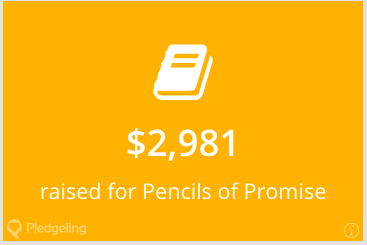Disclaimer: This post is reflective of our company while under the name Pledgeling and the listed information may be outdated. Please refer to our main company website on Pledge for current information and resources.
Article 26 of the Universal Declaration of Human Rights calls for "free and compulsory elementary education." That idea was taken further in the Convention on the Rights of the Child which stated that "countries shall make higher education accessible to all."
Unfortunately, the reality is that many children still don't have the liberty to go to school. In fact, roughly 264 million children don't have access to education (source: UNESCO).
The UN has declared January 24th as International Education Day as a tribute to the value of education and a reminder that there's still a lot to be done. We're here to brush you up on the state of global education and what you can do to push it in the right direction.
Child Labor and Conflict Are Barriers
It's estimated that 150 million children are working in the world today. In Sub-Saharan Africa, more than one in four children aged 5 to 14 years old are engaged in child labor. On top of that, almost one in four children are engaged in work that is harmful to their health (source: UNICEF).
The need to work is one of the largest barriers to education in the world. Children spend long hours working and have no time or energy to attend school, let alone do well.
Whether they are forced to work or must do so as a way to support their families, children are being denied opportunities for upward mobility and the freedom to choose their own paths. Communities suffer greatly when education lacks, too.
On top of working at very young ages, many children live in areas that are affected by conflict. In countries experiencing conflict, children are over twice as likely to be entirely absent from school (source: GEM Report). This is a shame because if a country's enrollment rate in secondary school is 10 percent higher than the world average, the chances of conflict in that country go down by 3 percent (source: World Bank).
So, there is a vicious cycle of child labor, conflict, and lack of education that exists. It's clear that simply building schools isn't going to change the state of global education.
Rather, dealing with the environmental and social factors that countries face will open the gate for education to be more accessible. There is a multitude of other issues that prevent children from going to school, too.
Discrimination, poverty, migration, forced displacement, and climate change are a few that come to mind.
What Can Be Done?
It may seem as though systemic, global issues such as the denial of access to education are too big to take on.
There are organizations fighting tirelessly to take these issues on, though. In declaring January 24th as the International Day of Education, the UN member states acknowledge the importance of education "so that all people may have access to lifelong learning... to acquire the knowledge and skills needed to access opportunities to participate fully in society and contribute to sustainable development."
There's hope when we all work together. Here are a couple of things you can do:
Spread the Word
First and foremost, make people aware that the International Day of Education is coming up.
Share some statistics, call friends and partners to action, and suggest that they donate to organizations working to give children access to education.
Give to Children's Education Organizations
Whether it's one-time or year-round Pledgeling's technology can quickly and easily integrate into your business platform. The Pledgeling API allows you to seamlessly integrate global charity search and donation processing into your online platforms. Offer your users the ability to search for their favorite charities around the world by name, location or cause directly through your site.
Through our flexible API you have complete control over the user experience and can allow your users to donate in a variety of ways, including the ability to round-up their transaction for charity, enter their own donation amount, or have preset donation options to choose from.
If you own an eCommerce store through Shopify, our Give & Grow app can implemented into your online store, enabling you and your consumers to make donations, and see the impact in real-time via an Impact Calculator.

First, choose from one of the 500+ Children's Education Organizations that Pledgeling has partnered with. You'll then take five minutes or so to add the Give & Grow widget to your Shopify store and... voila!
Your customers will have the ability to give a donation as they check out on your page. Not only that, but they'll also be able to see just how far their donations are going if you add an Impact Calculator.
If you're interested in learning more about using your business to benefit the state of global education through Pledgeling, Contact us to find out how it's done!